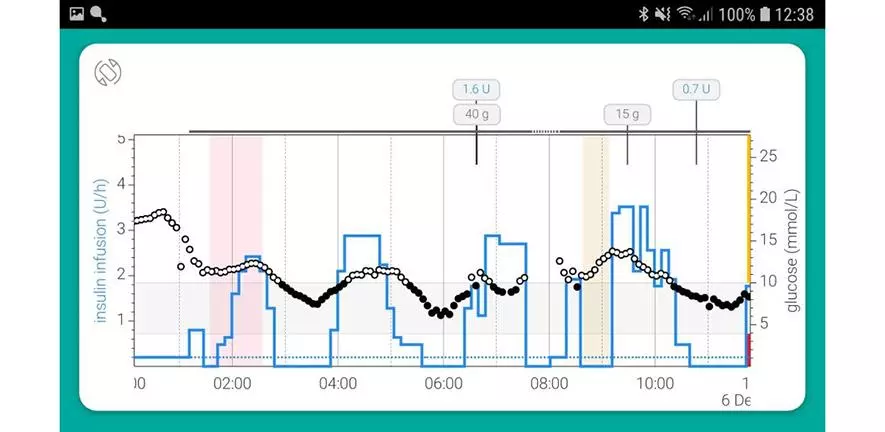Scientists at the University of Cambridge have launched what they describe as the world's first licensed, downloadable artificial pancreas smartphone app for sufferers of type 1 diabetes. The culmination of 13 years of research, the software helps in the safe administering of insulin and is hoped to greatly reduce the burden of managing the disease.
People with type 1 diabetes need to keep an almost-constant eye on their blood glucose levels and then administer insulin to keep them in check, because their pancreas no longer produces the hormone itself. This involves regular finger-prick blood tests and insulin injections, but lately we are seeing some promising technologies that could handle much of the workload.
These are known as artificial pancreases, and are built to handle the testing of blood glucose levels and the administration of insulin all at the same time. These systems could take various forms, whether it involves a needle beneath the skin to monitor blood glucose and automatically release insulin as required, or implantable microcapsules that do much the same thing.
The CamAPS FX app developed by the Cambridge researchers doesn't offer quite the same type of closed-loop system, in that it requires a certain type of insulin pump (a Dana RS) and glucose monitor (a Dexcom G6) to work. These components work with a complex algorithm built into the app to automatically deliver insulin to type 1 diabetics as needed.

“Overall, it makes me feel free," says Fiona O’Reilly, who used the app as part of a clinical trial. "It is the closest I have been to living without the burden of type 1 diabetes since I was diagnosed, which is a fabulous feeling – I feel less fearful of hypoglycaemia, and less ashamed of the fact that I find achieving good glycaemic control so tricky."
At launch, the app is licensed for use by adults and children, and is said to be the first artificial pancreas system licensed for use by pregnant women and children one year old and above. To start out, the app will be available to Android users who attend a small number of diabetes clinics in the UK, though the researchers behind it hope that it will one day be available to all type 1 diabetics and work with a range of pumps and glucose monitors.
“This is a major stepping stone towards providing widely available, clinically proven, and user-friendly artificial pancreas technology to people with type 1 diabetes," says Professor Roman Hovorka, who led the development of the app. “Our aim is to alleviate the ever-present burden of type 1 diabetes and improve health outcomes. This is the outcome of hard work, with more to come. We are indebted to all who are helping us on this journey.”
Source: University of Cambridge




